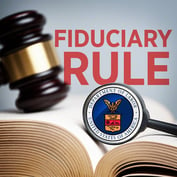p>Jan. 25, 2005 — Dividend-paying securities have become increasingly popular among investors for a number of reasons, including favorable tax reforms, and the appeal of high-yielding equities as a safe haven during periods of market volatility.
Indeed, there were 1745 dividend increases reported last year, a 7.1% increase over 2003, according to Standard & Poor’s data. In cash terms, U.S. companies paid out a record $181 billion in dividends, not including Microsoft’s (MSFT) gigantic $32.6 billion one-time payment. Howard Silverblatt, market equity analyst at Standard & Poor’s, believes that with cash levels in S&P 500 companies at record highs, dividend payouts could increase by more than 12% in 2005.
Investors can exploit this dividend-paying frenzy through an array of high-yielding equity investment vehicles, including equity-income funds such as Vanguard Equity Income (VEIPX) or Parnassus Equity Income Fund (PRBLX), which emphasize dividend-paying, large-cap value issues primarily, or through certain sector funds that focus exclusively on dividend-paying industries. Owning hand-picked individual stocks of dividend-paying companies directly is another option.
Sam Stovall, chief investment strategist at Standard & Poor’s, estimates that about 75% of S&P 500 companies are currently paying dividends. He notes the highest dividend yields tend to come from large-cap stocks with low price-to-book values in the financials, utilities, materials, energy, telecom services, and consumer staples sectors. Tobacco and real estate investment trusts (REITs) provide particularly rich dividend yields. As a whole, the S&P 500 presently yields 1.94% on average.
However, in addition to dividend-yielding stocks and equity-income mutual funds, investors may also consider putting their money into certain exchange-traded funds (ETFs) designed to generate high dividend yields. The iShares Dow Jones Select Dividend (DVY), for instance, is essentially a basket of dividend-paying stocks that can be bought in a single clip. Still in its infancy, the ETF industry has mushroomed into a $212-billion business in little more than a decade.
ETFs are basically baskets of securities that can be bought and sold like stocks throughout the day. As a result, they provide the ease, flexibility, liquidity, and continuous pricing of owning individual stocks with the diversification of index funds, notes Srikant Dash, equity index strategist at Standard & Poor’s. Moreover, ETFs typically feature much lower management fees and expense ratios than more conventional mutual funds. “There’s a wider variety of styles, size, and sector-specficity available in the ETF universe than in the open-end mutual fund format,” Dash added.
The Tax Relief Reconciliation Act of 2003, which essentially cut the maximum tax rate upon dividends from 35% to 15% for most investors, also applies to dividends distributed to shareholders by ETFs. [Investors should be aware that the new tax rate expires at the end of 2008, unless President Bush can extend it.] Also, ETFs trade so infrequently that they incur low capital gains distributions. In short, lower turnover makes ETFs more tax efficient than most actively managed mutual funds. That’s especially important when they are held outside of defined contribution plans, such as 401(k)s.
One drawback related to ETFs is the higher transaction fees and broker commissions they require, especially if traded frequently, Dash notes. However, any comparisons between ETFs and regular index mutual funds should involve the evaluation of a number of factors, including expense ratios, operating and management fees, investment objectives, and risk tolerance. In terms of monthly dollar-cost averaging small amounts of money, a low fee mutual fund could be a better option in order to avoid excessive and repeated commissions.








 January 27, 2005 at 07:00 PM
January 27, 2005 at 07:00 PM










